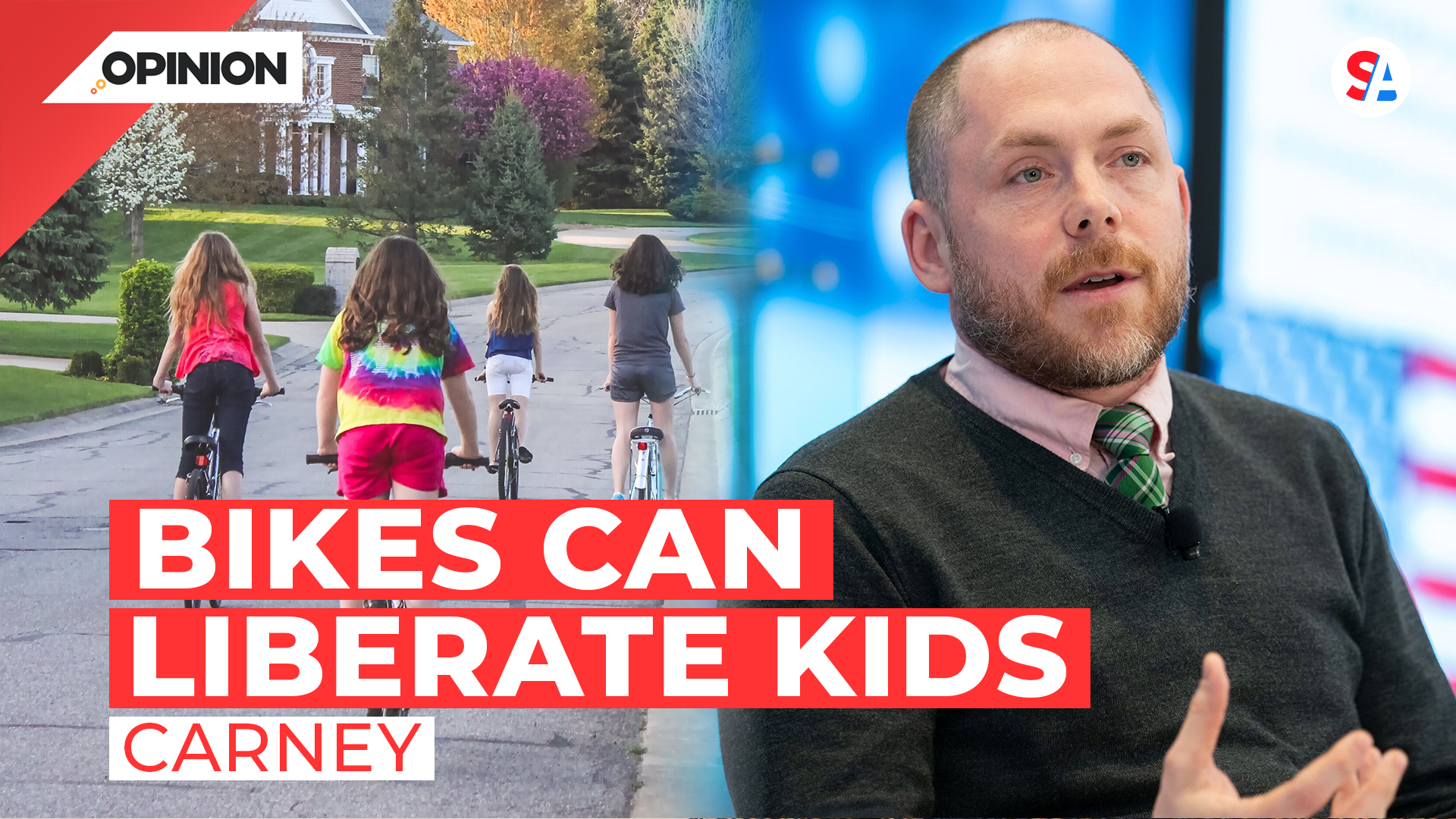
Commentary
-
Our commentary partners will help you reach your own conclusions on complex topics.
Walkability. Bikeability.
If a politician or commentator uses those word in America today, he or she is probably a liberal. But conservatives ought to care about walkability and bikeability too. The cyclist lobby was on Capitol Hill this Spring pushing the pro-bike cause. Their agenda included a federal tax credit for battery powered e-bikes.
Now, that makes no more sense than tax credits for electric cars. The tax code should not favor expensive electrified bikes over other purchases a family might make. But the other item on the bike lobbyists’ agenda was a policy proposal that conservatives should embrace: Using federal transportation money to build better and safer infrastructure for bicycles.
Millions of Americans ride bikes. Some ride bikes just for exercise. Others use their bikes to get to work or go shopping. These activities may or may not appeal to you, but how about a family bike ride, where Dad takes the kids out on a Saturday outing?
Or better yet, take Mom or Dad out of the picture. If you are Gen X or older, you probably remember the days of your youth, wandering around the neighborhood on foot or on bike until the street lights came on. These days kids walk much less than we did, and they bike less, too. Take getting to school, for example. In 1969, more than 40 percent of American school kids walked or biked to school, according to survey data. By 2016, that number was about 10 percent. Today, parents are stuck taking kids everywhere they want to go. That is not pro-family.
Improved bike and pedestrian infrastructure is pro-family because it liberates kids. It makes it easier for Susie to get herself to soccer practice, or Joey to roam the town with his buddies. We should be doing whatever we can to make parenting easier these days — liberating kids will liberate parents.
Why should the government be involved? Because transportation infrastructure is inherently a governmental responsibility. Just as governments pave roads, and lay train tracks, they also pave sidewalks and paint crosswalks. Bike lanes and bike trails fit into this network of thoroughfares that different people use to get around. Making these trails safer is a legitimate government role. That could include building connectors between different trails or making safer crossings over major roads. It could include more robust dividers between car and bike lanes.
More governments should be spending more for pedestrians, too. I live in the suburbs outside of Washington, D.C. Many blocks have no sidewalks at all. Many roads are wide and fast, and the crosswalks are few and far between. That’s a world built for cars and a place built for cars is not built for humans. Which is why, in my old Wheaton-Glenmont neighborhood, pedestrians regularly were hit and killed by cars.
Even if you don’t care about curbing carbon emissions, and even if you love driving your car, you should want to spend our transportation money on making it safer for kids and adults to get around on foot and on bike, because it’s good for community and good for families.
-
How Biden’s tax on Chinese metal harms Americans
President Joe Biden announced plans to triple tariffs on Chinese steel and aluminum to protect American jobs from “unfair” competition. The White House said China is hurting the U.S. economy by selling steel at very low prices. Watch the video above as Straight Arrow News contributor Timothy Carney argues that while Biden’s new tariffs might…
-
Democrats use climate change issues to help sell liberal agenda
According to a January survey, only 12% of Republicans say dealing with climate change should be a top priority for the president and Congress, ranking the issue last among the 20 included in the survey. By contrast, 59% of Democrats say climate change should be a top priority for the president and Congress. While Democrats may…
-
HHS Secretary Becerra’s crusade against Catholicism
When President Joe Biden took office, he nominated Xavier Becerra, a former California congressman and attorney general, to run the U.S. Department of Health and Human Services (HHS). As California’s attorney general, Becerra was at the forefront of legal efforts on health care. In his current position as HHS secretary, Becerra is a strong proponent…
-
Universities must blame themselves for protest hypocrisy
U.S. college protests over the Israel-Hamas war have divided college campuses, often pitting university officials and executives against their own students and faculty. And yet, as Straight Arrow News contributor Timothy Carney points out, many of today’s university officials are actually the anti-Vietnam War protesters of a previous era’s student protest movement. Today, those same…
-
Subsidizing demand won’t fix real problems
The Biden administration recently announced an initiative to cap child care copay expenses for approximately 100,000 low-income working families in the United States. Instead of paying set fees, those families will pay 7% of whatever their total income is as a copay for the government-subsidized daycare program. The program also hopes to fully cover all…
Latest Opinions
-
 U.S. Department of Defense
U.S. Department of Defense
Congress still trying to figure out how to reduce wasteful military spending
-
 DVIDS
DVIDS
US Navy, Air Force making waves with new weapons at RIMPAC
-
 Getty Images
Getty Images
Israeli PM Netanyahu meets with Trump at Mar-a-Lago
-
 Getty Images
Getty Images
Growing US nuclear power resurgence reaches the nation’s heartland
-
 Getty Images
Getty Images
Beer from the sun, other solar thermal projects get government funding
Popular Opinions
-
In addition to the facts, we believe it’s vital to hear perspectives from all sides of the political spectrum.


